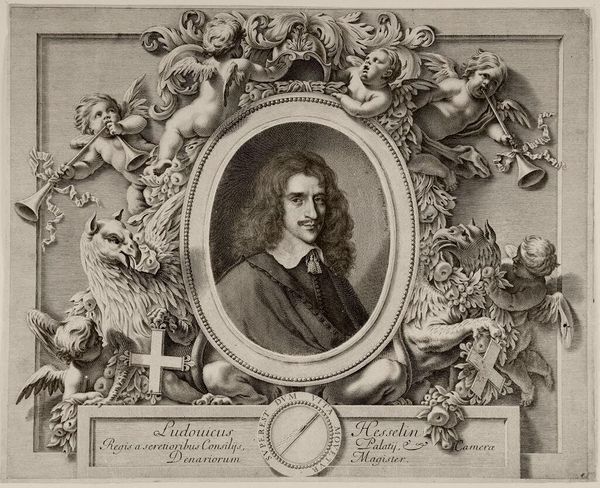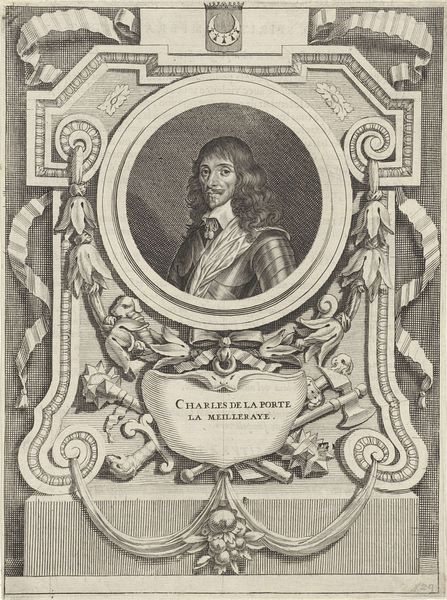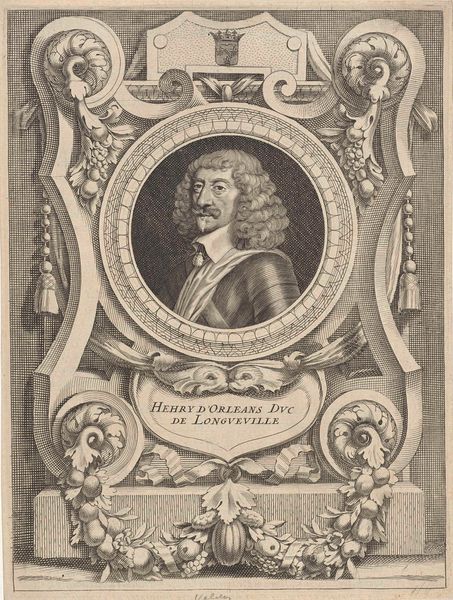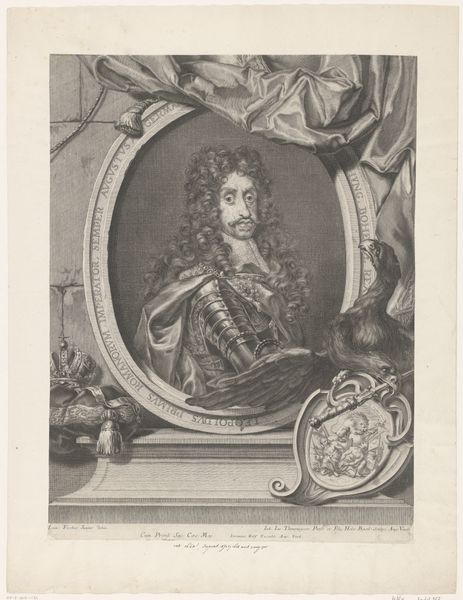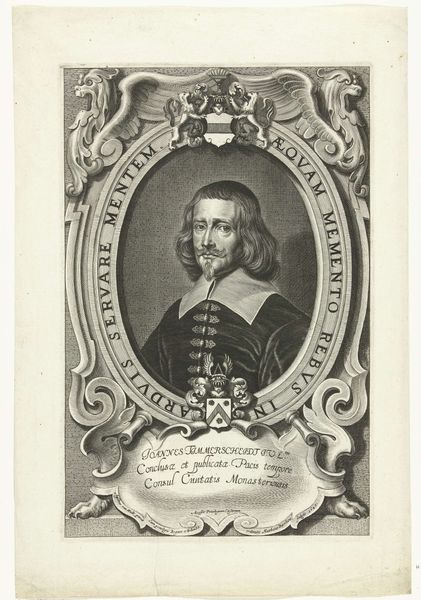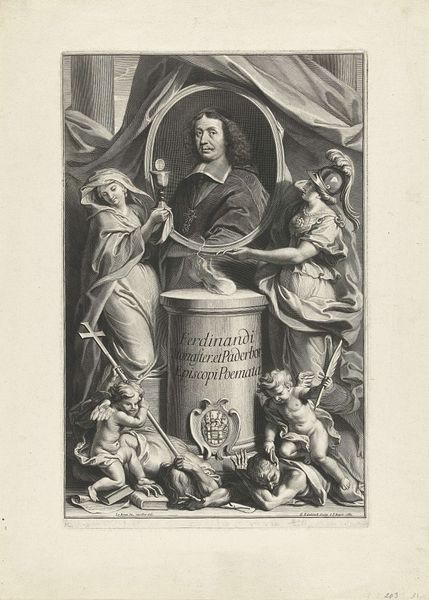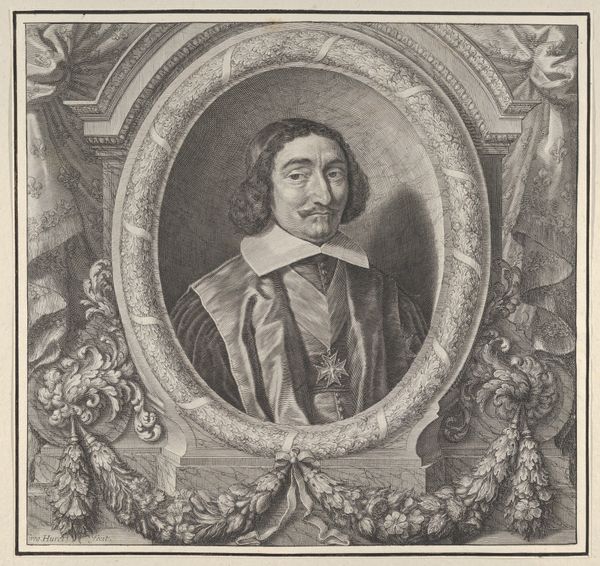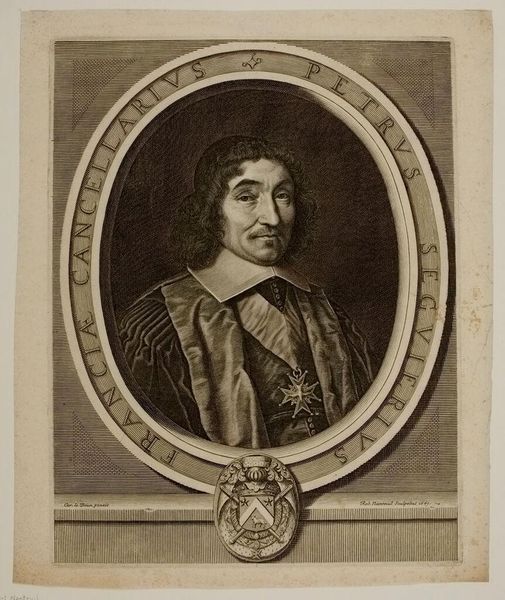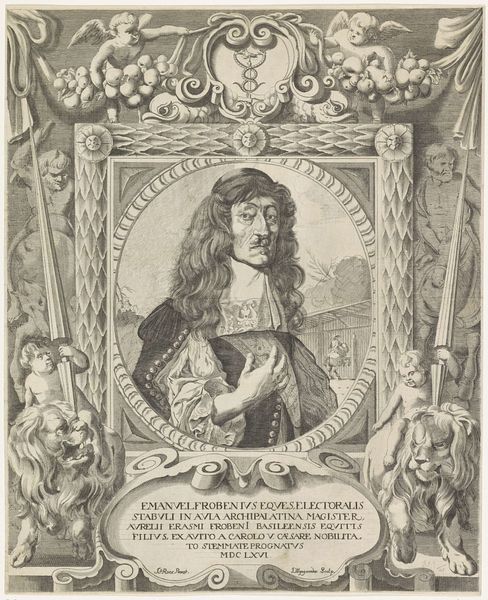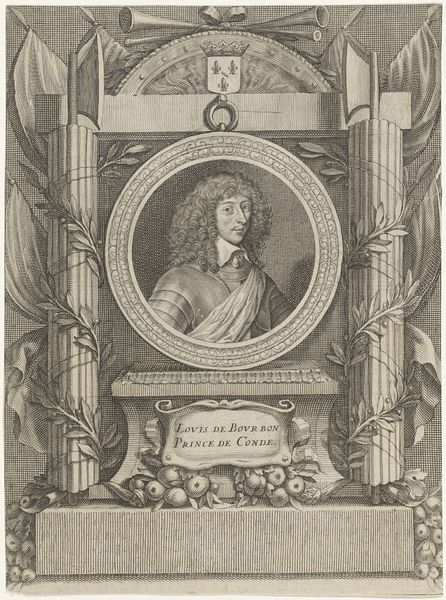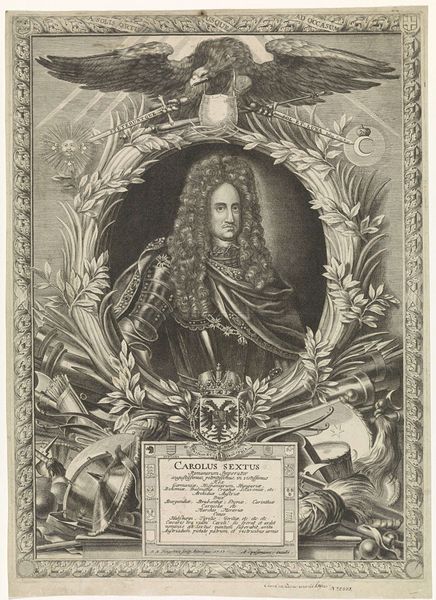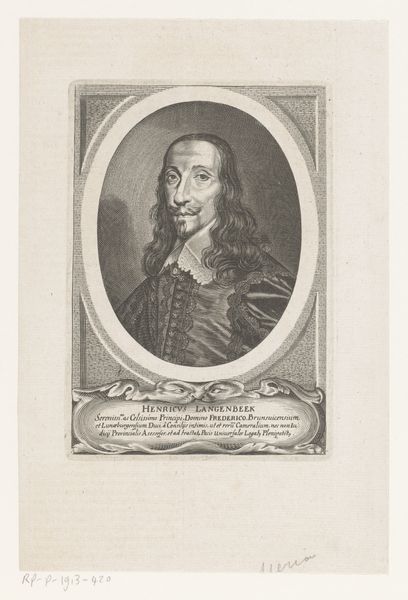
engraving
#
portrait
#
baroque
#
old engraving style
#
history-painting
#
engraving
Dimensions: height 150 mm, width 116 mm, height 300 mm, width 374 mm
Copyright: Rijks Museum: Open Domain
Editor: So, this is Robert Nanteuil's "Portret van Louis Hesselin" from 1650, an engraving at the Rijksmuseum. It strikes me as incredibly ornate; almost like an official declaration. What elements stand out to you the most? Curator: The engraving itself is fascinating. Nanteuil was renowned for his mastery of the burin. Think about the labor involved – the precision, the time – to produce these intricate lines, multiplied across potentially hundreds of impressions. This process made luxury accessible to a wider audience. How does understanding the method alter your initial read of it as an 'official declaration'? Editor: That's a great point. Knowing the process changes my perspective. It becomes less about pure authority and more about a calculated display, even a marketing of power through skillful crafting. Curator: Precisely. Consider too the availability and cost of paper at this time and to whom it would be accessible. It’s easy to overlook the material basis, but the consumption of images like this were very carefully dictated by class. This wasn't mass media as we understand it, but a targeted form of propaganda. Editor: Propaganda through craftsmanship – I hadn't thought of it that way! So, is the choice of engraving itself part of the message, highlighting Louis Hesselin's refinement through a similarly refined medium? Curator: Exactly! The material informs the meaning. By examining the materials and modes of production, we begin to uncover social hierarchies in very surprising places. Editor: This has completely changed my initial read; I’m looking at this image with fresh eyes. Thanks! Curator: And thanks for engaging with the social life of this object, from the artist’s labor to the buyer’s display!
Comments
No comments
Be the first to comment and join the conversation on the ultimate creative platform.
